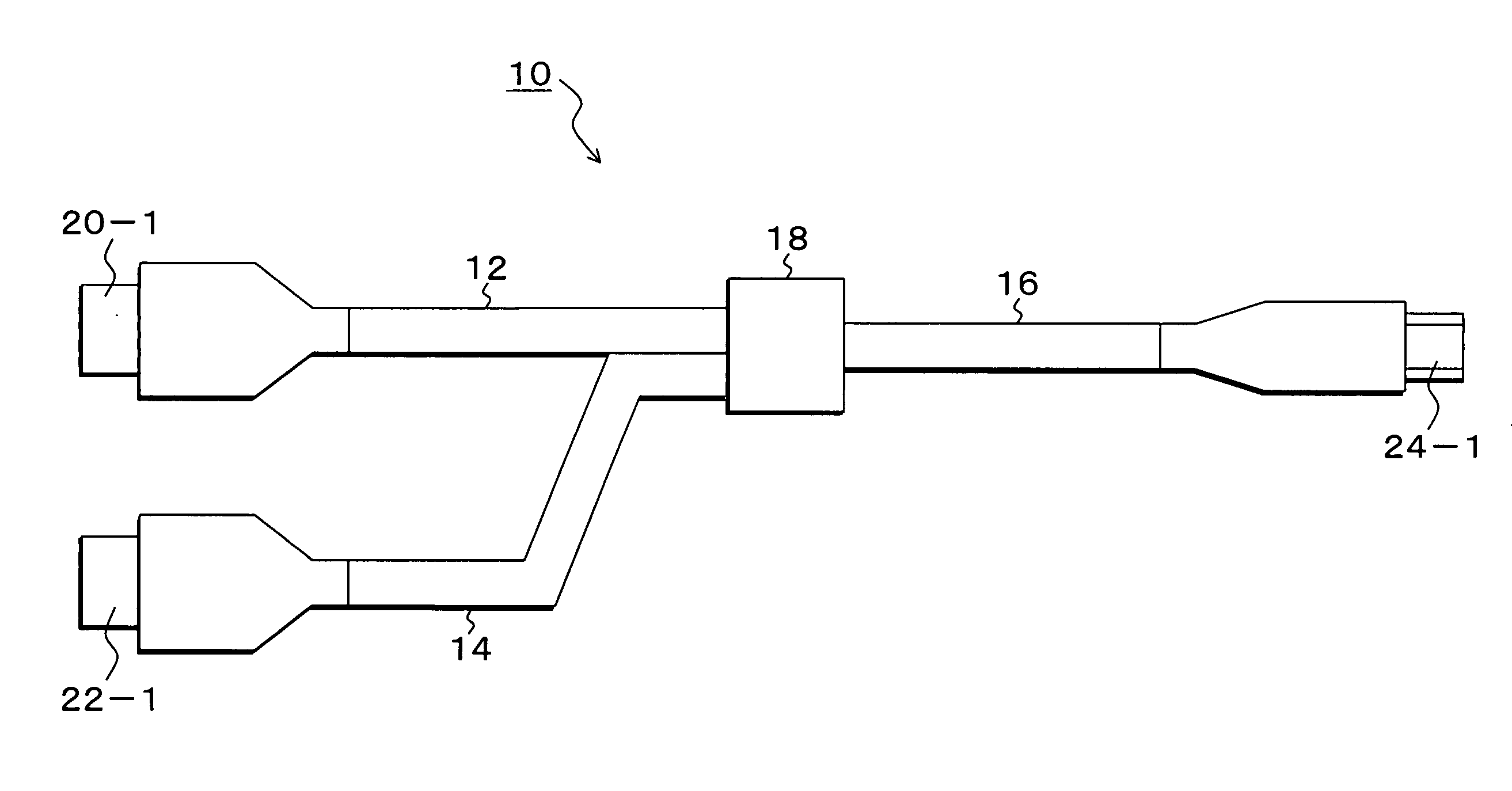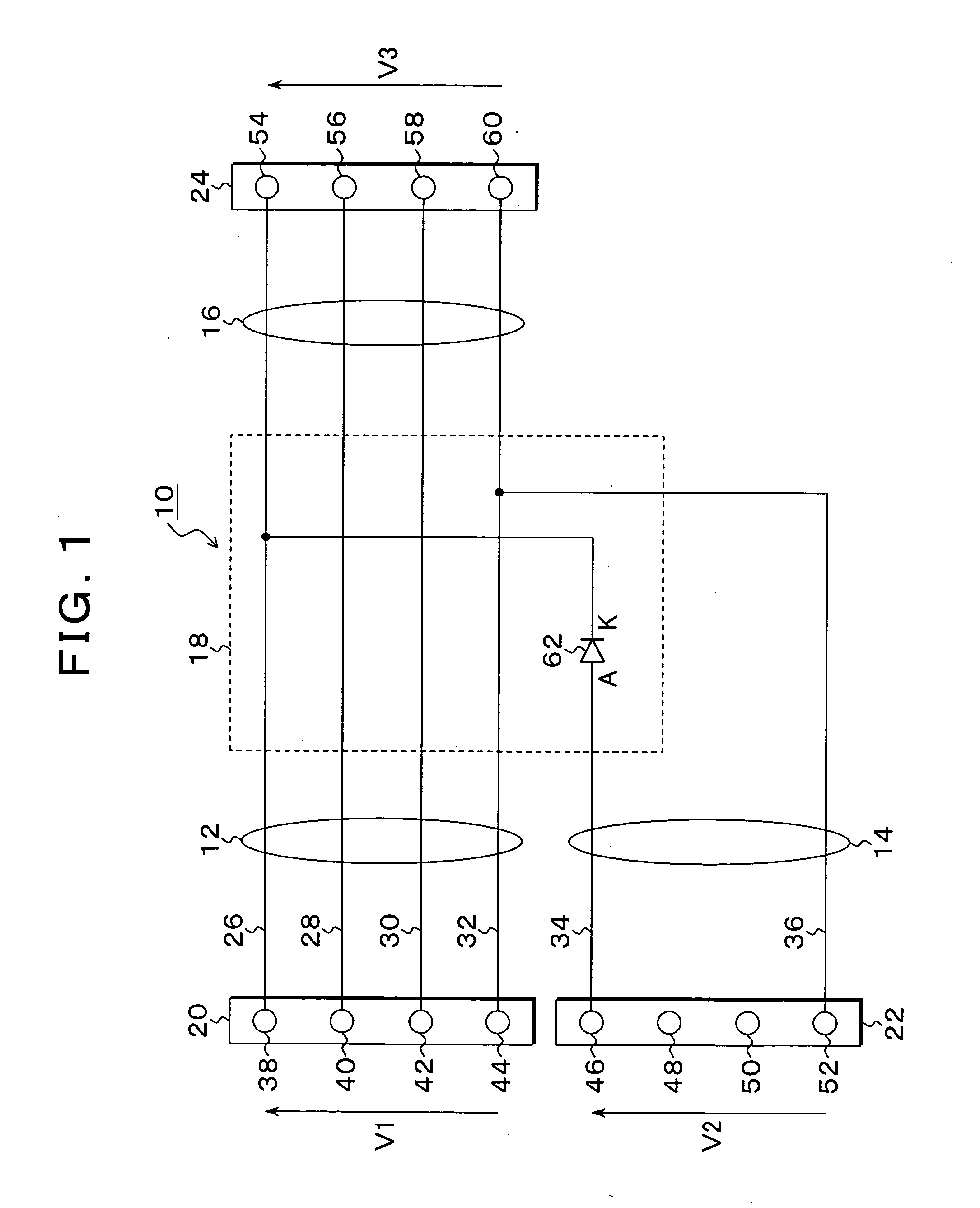USB cable device, USB subsystem and USB drive devices
a technology of usb subsystem and usb port, which is applied in the direction of liquid/fluent solid measurement, instruments, transportation and packaging, etc., can solve the problems of inability to apply conventional technology for filling up power shortages by, insufficient current supply capability of usb port of personal computer or pc-card usb hub,
- Summary
- Abstract
- Description
- Claims
- Application Information
AI Technical Summary
Benefits of technology
Problems solved by technology
Method used
Image
Examples
Embodiment Construction
[0072]FIG. 1 is a circuit diagram illustrating an embodiment of the USB cable device of the present invention. In FIG. 1, the USB cable device 10 of this embodiment comprises a main cable 12, an auxiliary cable 14, a drive cable 16 and a connection module 18. The main cable 12 has a positive power line (VDD line) 26 prescribed by the USB Rules, a negative power line (GND line) 32 forming a pair therewith, a positive signal line (positive DATA line) 28, and a negative signal line (negative DATA line) 30 forming a pair therewith. The main cable 12 has at an end a connector 20 for connecting to a host USB port of a host such as a personal computer. The connector 20 has a positive power terminal 38, a positive signal terminal 40, a negative signal terminal 42 and a negative power terminal 44. The auxiliary cable 14 has a positive power line 26 and a negative power line 32, but not signal lines corresponding to the positive signal line 28 and the negative signal line 30 of the main cable...
PUM
 Login to View More
Login to View More Abstract
Description
Claims
Application Information
 Login to View More
Login to View More - R&D
- Intellectual Property
- Life Sciences
- Materials
- Tech Scout
- Unparalleled Data Quality
- Higher Quality Content
- 60% Fewer Hallucinations
Browse by: Latest US Patents, China's latest patents, Technical Efficacy Thesaurus, Application Domain, Technology Topic, Popular Technical Reports.
© 2025 PatSnap. All rights reserved.Legal|Privacy policy|Modern Slavery Act Transparency Statement|Sitemap|About US| Contact US: help@patsnap.com



